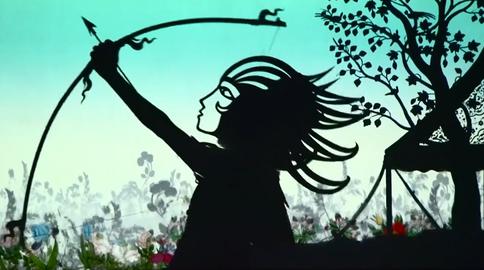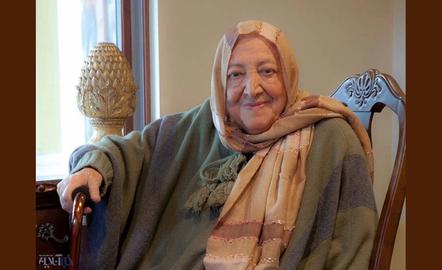“But all this world is like a tale we hear – Men’s evil, and their glory, disappear.’
The great Persian poet Abolgasem Ferdowsi died 1,000 years ago today. Like many of the best-known quotes attributed to Ferdowsi, these lines issue forth from his literary magnum opus, the Shahnameh (the Book of Kings).
In simpler times, Iranians might today be flocking to live performances, events and talks to mark Ferdowsi Day: an annual programme of events honoring the most influential figure in Persian literature. Others might be traveling to the famous Mausoleum of Ferdowsi in the city of Tus, Khorasan province, to pay their respects. Similar celebrations might be taking place in Afghanistan, Tajikistan and across Central Asia.
On this especially significant year, in the middle of a pandemic, any public festivities might well turn out to be a muted affair. But one thing is certain: in this pronouncement at least, the composer of Iran’s national epic was mistaken.
Not all glory disappears. Some adapts, survives and flourishes in new and diverse forms, thanks to the efforts of a handful of luminaries working to keep their heritage alive today.
One such individual is Hamid Rahmanian. For the past 12 years, the Iranian-born multi-disciplinary artist and Guggenheim fellow has devoted his creative energies to bringing Ferdowsi’s masterwork, the Shahnameh – a sprawling, mythic history of Persia up to the 7th century, told in 60,000 rhyming couplets penned over 30 years from 977AD and still thought to be the longest epic poem composed by one person – to new audiences all over the world.
Through Rahmanian’s efforts the Shahnameh has been brought back to life in the 21st century in an array of arresting new guises: from an illustrated English translation, to pop-up and audiobooks, to jaw-dropping live shadow theater productions. The biggest of these staged endeavours to date, Feathers of Fire, has now struck out into the digital sphere. Those compelled to stay indoors today, and curious audiences all over the world, can watch a stunning re-working of one of Ferdowsi’s best-known tales online, streamed in the comfort of their own homes.
Re-Telling the Shahnameh

Hamid Rahmanian’s New York studio is still a hive of activity. He is working 12 hours a day on the next stage production of a Shahnameh tale, Song of the North, which re-tells the story of the heroic and headstrong Princess Manijeh.
“I don’t leave the studio except to go for a run,” Rahmanian tells IranWire. “There’s a lot of content to create and it’s a very solitary experience making this art. We are also trying to raise funds during a pandemic, which is complicated.”
Rahmanian was born in Iran and studied graphic design at Tehran University. In his early 20s he set up a successful design firm, which had 12 employees by the time he was 24. But then he read a section of verse by the Persian poet Sa’di and decided to leave the country.
The line has been variously translated, but says in essence: “What benefit will you derive from a basket of flowers? Carry a leaf from my garden.”
“It made me want to migrate,” says Rahmanian. “I felt in Iran I had a basket of flowers in front of me, and I wanted to find the garden.”
He moved to America in 1994 and initially landed a job at Disney, working on children’s films such as Tarzan and Emperor’s New Groove. He later began producing independent film and graphic art and in 2003 co-founded ArteEast, a non-profit organization dedicated to raising awareness of the arts of the Middle East and North Africa.
“When I came to America I realised my culture was under attack,” Rahmanian says. “Everything in the media is about shortcomings in Iranian culture and society. I want to show there’s something exceptional about us, and that’s our visual culture and our literary tradition. This work highlights the strength of our culture.”

The Shahnameh is little-known among Westerners despite being comparable to the Iliad and the Odyssey in its scope and importance. Ferdowsi’s compendium of myths, legends and historical events from the pre-Islamic period runs to almost 1,000 chapters. Its massive array of characters, creatures, situations and moods are touched throughout by humanist sensibility.
“The stories are relevant for today’s world,” says Rahmanian. “There’s a lot of teaching of diplomacy, forgiveness and tolerance, and the understanding that the enemy can actually be better than you sometimes. The women in the Shahnameh are also very strong.
“My principle in creating this work is similar to what Ferdowsi did. He put together a millennium-old tradition; he didn’t write those stories, but he re-told them in the most magnificent and eloquent way. I’m trying to do the same thing now in visual culture.”
In 2013 Rahmanian completed a milestone project: a new English translation of the Shahnameh, translated by the sociology professor Dr Ahmed Sadri and bursting with digital illustrations by Rahmanian that drew on centuries of Persian visual tradition. It took about 10,000 hours of work and the piecing-together of more than 8,000 pieces of original miniatures and lithographs from the 14th century to the 19th century. Rahmanian then began experimenting with shadow theater techniques, and in 2014 created a 20-minute short entitled Zahzak: The Legend of the Serpent King, based on a fable from the Shahnameh. It was a precursor to the biggest completed project to date, Feathers of Fire.
A Groundbreaking Feat

Feathers of Fire is breathtaking to watch, and at the time of its creation was a game-changing technical feat. Created in partnership with internationally-acclaimed theater artist Larry Reed, the live show incorporated eight live shadow casters, 160 hand-crafted puppets, 137 vivid animated backgrounds and an original music score to tell the story of Zaul and Rubadeh, two star-crossed lovers from the Heroic age.
The story is one of three stand-alone tales in the Shahnameh. Zaul is abandoned at birth by his father, a Persian knight, and raised in the wild by a mythical bird, Simurgh, while Rudaba is the Princess of Kabul and daughter of the reviled Serpent King. The pair resolve to marry despite the tensions between their forefathers: tensions that threaten to spill into all-out warfare, which the couple and their parents defuse through wit and gentle diplomacy – with some help from a coterie of wondrous beasts.
“This story is about perseverance and standing on your own two feet,” says Rahmanian. “We can be the masters of our fate, and not wallow in bitterness.”

With its combination of ancient theater practices and cutting-edge digital elements, Feathers of Fire is littered with visually spectacular scenes: from Simurgh tearing upwards to her nest in the skies, carrying the baby Zaul under her wing and encircled by birds, to Rubadeh letting her hair down, Rapunzel-like, to Zaul at their first clandestine meeting under the stars, to a face-off with a sea monster in the eye of a churning storm. Live actors silhouetted against the stage use the minutiae of gesture and light-footed movements to beautifully express the characters’ unique “bird-like” and “snake-like” traits, while lesser protagonists are picked out in exquisite detail in puppet form. Their construction and the animation style draw on centuries of Persian visual tradition.
For this to work, the puppets require skilful manipulation and spot-on timing. There are 1,163 cues in Feathers of Fire. All in all the production took two years to create and perfect and took 350 panels of rigorous storyboarding, careful attention to detail to allow the shadows to move freely across them without turning “muddy” and two and a half months of blocking scenes with the actors.
“Everything about this project is hell,” Rahmanian jokes, “except for those 70 minutes when they open up and perform. That is pure heaven, pure magic.”
Feathers of Fire premiered at the Brooklyn Academy of Music and then toured the world for two years. Along the way it was seen by more than 100,000 people, including 47,000 children, across 112 live shows. Audiences from Canada to China were spellbound. “Kids in American never get exposed to these kinds of stories,” says Rahmanian. “When they leave, you can see their eyes shining.”
Last week Feathers of Fire, which also won a UNIMA award for excellence in live performance and design, was uploaded to video-streaming platform Vimeo. It can now be viewed anywhere in the world at a fraction of the cost of a theater performance. Rahmanian hopes it will encourage more people still to engage with his work, and in turn the work of Ferdowsi.
“I’m one person carrying this flag,” he says. “Historically we [Iranians] have been demoralized, and sometimes we lose sight of what treasures we are carrying on our shoulders.”
Personally, though, he won’t be doing anything special to mark Ferdowsi Day. “I’ve been living with this guy for 12 years. Hopefully through me, he’ll live even longer.”
To watch Feathers of Fire online click here.
visit the accountability section
In this section of Iran Wire, you can contact the officials and launch your campaign for various problems
































comments